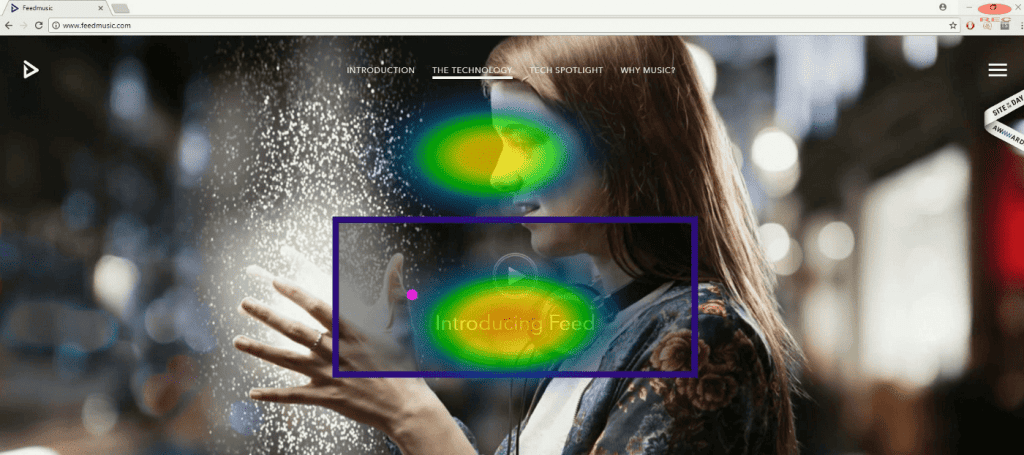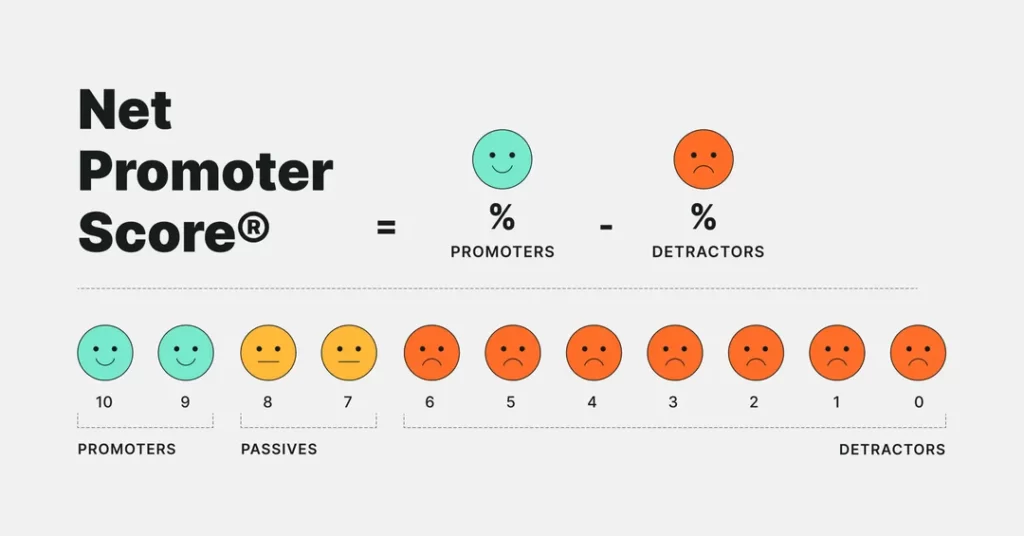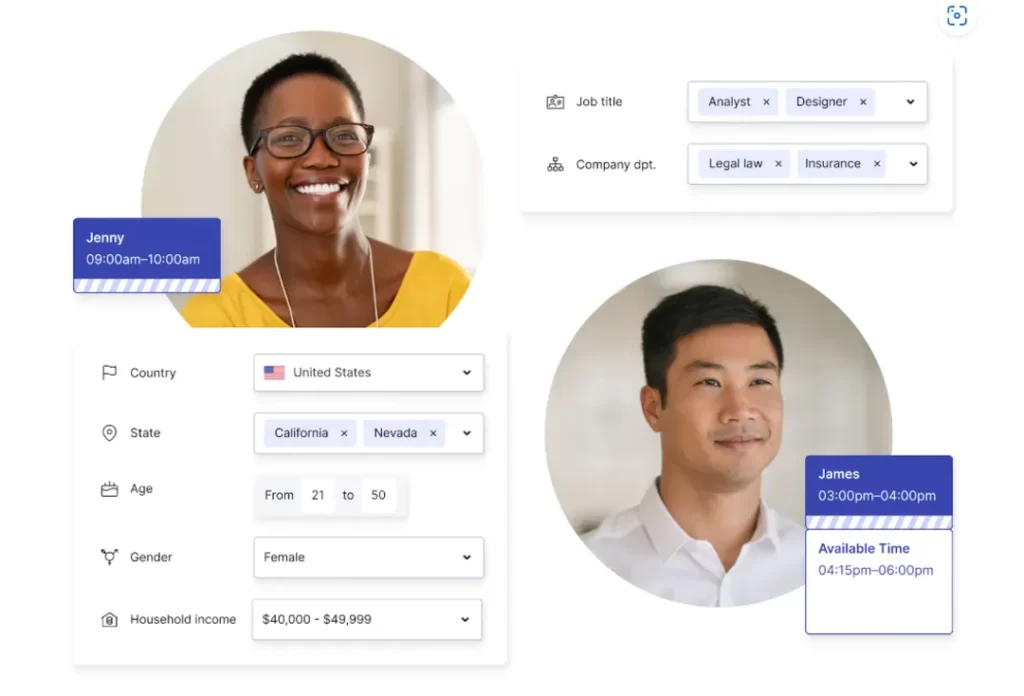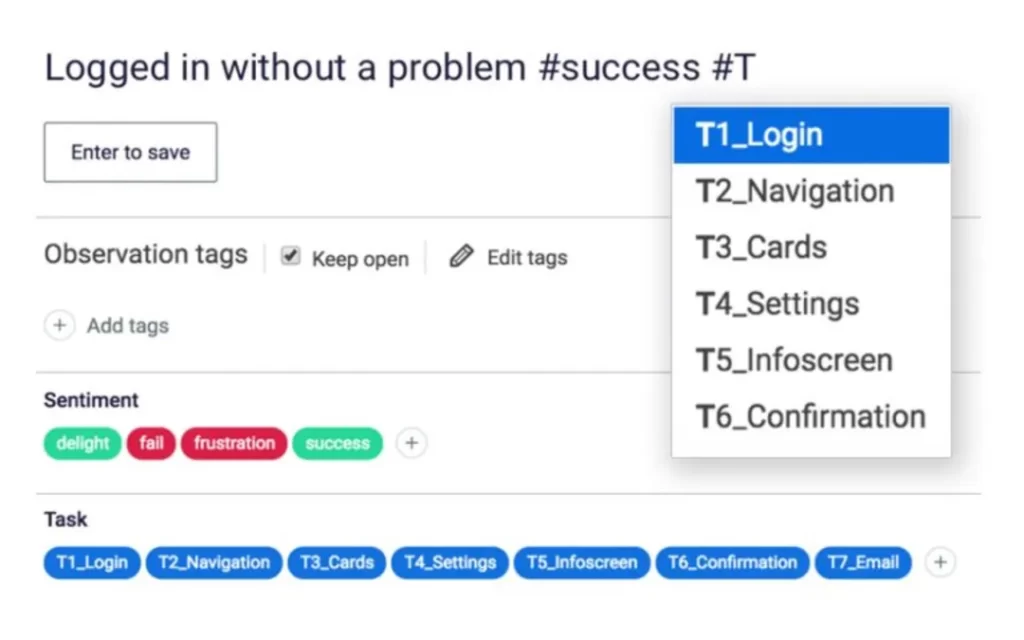UX Metrics: How to Measure the Success of Your Design
A successful user experience (UX) may make all the difference in a product or service's success. Yet creating a fantastic user experience is only the first step—measuring its success is just as crucial.
UX metrics allow designers to statistically assess how consumers engage with a design, allowing them to pinpoint problematic areas and make informed choices.
We'll discuss the various UX metrics in this post, their significance, and how to apply them to evaluate the effectiveness of your design and ultimately provide conversion optimisation for eCommerce websites.
This guide will provide the information necessary to improve your design and the user experience, regardless of your level of expertise as a UX designer.
- UX metrics are essential for evaluating the success of designs and guiding improvements based on user engagement data.
- Key UX KPIs include Customer Satisfaction Score, Net Promoter Score, and user error rates, aiding strategic decisions.
- Behavioural and attitudinal metrics differentiate user actions from perceptions, providing a comprehensive view of user experience.
- Effective measurement of UX can lead to significant improvements in conversion rates for eCommerce websites.
Why Measure UX Success?

There are a variety of reasons for tracking the UX KPIs for your company:
- KPIs assist you in more effective communication with your UX concerns and the corresponding strategic goals to the decision-makers in your organisation. You may support your claims with logical, verifiable facts and numbers. Without these KPIs, it isn't easy to demonstrate whether your UX team's efforts have been worth it. Having reliable data on hand is also simpler to determine the yearly UX budget.
- UX KPIs are a potent business navigation tool that keeps you from taking the incorrect path and squandering resources. UX data allows you to compare your project to internal or external reference data sources and identify outstanding assignments.
- UX KPIs provide quick access to reliable information on the calibre of your product while significantly reducing the complexity of vast volumes of data—UX KPIs aid in figuring out whether something is off and might need fixing.
Behavioural and Attitudinal UX Metrics
The two primary categories of UX measurements are attitudinal and behavioural UX KPIs.
As clear from the name, user attitudes are the focus of attitudinal UX metrics, often quantified on a “system usability scale,” ranging from extremely satisfied to extraordinarily dissatisfied or happy to sad. Among the attitudinal KPIs are:
- Customer Effort Score (CES);
- Net Promoter Score (NPS);
- System Usability Scale (SUS);
- Customer Satisfaction Score (SCAT);
- Etc.
Metrics for behavioural UX are often more scientific and quantitative. They have precisely defined units and are frequently transformed into percentages or rates. They are typically measured by software systems or observation. Some essential behavioural UX KPIs are:
- Task success rate;
- Time on task;
- User error rate;
- Conversion rate;
- Etc.
What Metrics to Measure

Measuring the relevant KPIs is essential to the accomplishment of your UX activities.
Begin by measuring your company or project's top two or three UX KPIS. This will assist you in maintaining control of the situation and preventing early confusion. Yet the set of necessary KPIS will be unique for each company and project.
Task Time
The metric helps estimate the time it takes to complete a task. The greater the user experience, the faster the work is completed. Longer time indicates that consumers need help discovering what they need on the website, help with the UX, or help understanding how to utilise a product.
The following formula is the most typical strategy: Time on task = Average time on task / total time on tasks.
The KPI can display a poor score even if user navigation may be seamless. That would indicate that the user did not comprehend the task. Hence, reframing the query might lead to more fruitful outcomes. A longer task duration may be advantageous if a designer's objective is user retention.
Task Success Rate
The task success rate is among the most popular and clear UX metrics. It aids designers in identifying problems with the user experience by displaying the proportion of participants who finish a task successfully. Success rates may be calculated as long as assignments have specific objectives.
This measure works well for actions like finishing a sign-up procedure or adding a particular item to a shopping cart. Consider that the success rate doesn't explain how effectively people complete tasks or why they fail them.
- Audible Audiobook
- Tom Greever (Author) – Ric Chetter (Narrator)
- English (Publication Language)
User Error Rate
The user error rate is a metric that shows how frequently a user makes mistakes while doing a job. The user mistake rate measure enables designers to identify and remove the primary pain points.
There are two popular methods for calculating the error rate: the average error rate should be measured if a job involves one or more possible faults, but you only need to track one. The approach described below can be used to measure several errors:
- The average error rate equals the sum of all errors and all possibilities for mistakes.
- The error rate is calculated as the sum of all users' errors divided by all users' total errors.
How user-friendly your website or product is may be assessed with the help of user mistakes. A high user error rate indicates poor user interaction with the product.
Completion Rate
The efficiency of your app's design may be assessed by computing the job completion rate. Simply put, the total number of tasks a user has finished while utilising your program.
Create the app in a way that encourages users to react if you want to raise this rate. Make sure the actions can be done fast as well. The jobs should be aligned to make it simple for users to switch between them.
Search and Navigation Usage
A vital tool on a website is the navigation bar. If a visitor can't find their way via the navigation, using the search bar is typically the next natural step.
The client experience is frequently enhanced by minimising the use of the search feature. Nonetheless, it is always wise to choose which of the two measures is preferable in each case individually.
- Gage, Marty (Author)
- English (Publication Language)
- 272 Pages – 05/10/2022 (Publication Date) – Wiley (Publisher)
System Usability Scale (SUS)
An industry standard for gauging perceived usefulness is this scale. It takes the form of a questionnaire, with responses rated on a five-point scale from strongly agree, extremely happy, and highly enjoyable to strongly disagree, extremely unsatisfied, and not pleasant.
Typically, each answer is given a score between 1 and 5 SUS points to create a table for each user.
SUS assigns a score ranging from 0 to 100. A SUS score of 68 or higher implies superb product usability, whereas a score of 68 or below suggests a potential design issue. Designers may also use this measure to compare their product to a prior version or to quickly A/B test two distinct designs.
Customer Satisfaction
This metric is similar to the previous one. It gauges how pleased customers are with a business's goods or services. Customers may be surveyed at any stage in their interaction with the brand to assess their happiness.
Many alternatives create a customer score, including numbers, verbal indications (unsatisfied, neutral, satisfied, etc.), and international symbols (i.e., emojis).
Customer satisfaction surveys are used to collect input, and there are two techniques to estimate CSAT from them. The first method is to determine your brand's average customer satisfaction score. The alternative is to calculate the percentage of satisfied clients.
Net Promoter Score (NPS)

The Net Promoter Score is a metric demonstrating customer happiness and loyalty.
To calculate the NPS, the user is just asked one key question: How likely are you to suggest (a brand, website, service, etc.) to a friend or coworker? The user responds to a scale from one (extremely improbable) to ten (very likely).
Using the response to the primary question on a scale from 0 to 10, determine the NPS. Those who answered the query were then divided into the following groups:
- Promoters (scoring 9–10): Clientele who will keep making purchases and referring others;
- Passive (scoring 7-8): contented customers who are open to proposals from other businesses;
- Detractors (scoring 0 to 6): irate customers who provide unfavourable evaluations.
The Net Promoter Score is a percentage of critics minus a percentage of promoters.
Retention Rate
To define retention, you must specify two components of your product.
The crucial stage for your goods. This is a user's action, and whether or not they are retained depends on it. This event needs to demonstrate value for both your customers and your company.
It should be connected to a business-generating action showing that consumers benefit from your goods. It can be a reservation, purchase, subscription, etc.
The time frame for using your product. This is the expected frequency of a user or customer doing the necessary event action. Choose a time frame that is most appropriate for your product. For instance, if you offer a digital product, it's often associated with a monthly subscription.
Retention rate calculations often compare the number of users on the first day to those present throughout the following period.
- Hardcover Book
- Pereyra, Irene (Author)
- English (Publication Language)
Heuristic Evaluation
Heuristics are predetermined usability principles (practical guidelines, norms, and practices) that have undergone extensive testing and observation.
In a heuristic study, experienced evaluators pinpoint and grade the usability problems with digital goods, enabling UX designers to discover and fix issues swiftly.
A website may be assessed using a variety of factors. Here are some of them:
- Status visibility: The system should always be visible to users, who should always be kept in the loop.
- Precise wording: Rather than using system-oriented terminology, the system should employ words, phrases, and concepts recognisable to the users.
- User freedom and control: Users frequently make unintentional system selections, requiring a simple means of leaving the undesirable state without going through a protracted discourse.
- Error prevention: Either get rid of error-prone situations or check for them and provide users with the choice of confirmation before they proceed.
- No need for memorising: Reduce the amount of memory required from the user by making objects, actions, and options visible.
- Minimalist and aesthetically pleasing design: Dialogues should include only sometimes or never-used information.
You'll require input from several reviewers depending on the standards mentioned above. Having multiple reviewers has the advantage that, even though they will likely find the same errors, each one will likely find something that the others have missed.
Number of Shares
Calculating the share count is one of the most significant ways to determine whether your software or product is successful.
Ensure your app has a share button so users can quickly share it on social media or online messaging services. When this button is built-in, it integrates with the design and complements the app's appearance.
Assessment Models
Several ready-made patterns can be used for UX success measurement. Let's look at some of them.
AARRR Framework
The term AARRR, which stands for five critical categories of measurements, was created to assist start-ups in expanding their businesses quickly yet sustainably.
“AARRR” is an acronym for:
- Acquisition: How do clients initially discover your good or service?
- Activation: What steps are potential customers taking to interact with your company?
- Retention: Are any of your customers leaving? How can you make sure they stay?
- Referral: Are there any strategies you may employ to get current clients to promote your business?
- Revenue: Does your company generate any revenue? How can you increase your income?
Tracking the factors above will allow you to understand more about the website's UX efficiency.
There is also a RARRA model, which is nearly identical to AARRR but favours Retention above Acquisition due to the severe competition among digital products. It is believed that consumers may never return to an app if it fails to establish a positive first impression.
The Customer Experience Index
The Customer Experience Index gives a clearer view of the requirements and desires of customers. Based on Forrester's confidential consumer survey data, this index serves as a standard for the quality of customer experience across major international businesses.
The Customer Experience Pyramid, on which the CX Index is built, states that, from the standpoint of the consumer, three factors contribute to successful customer experiences:
- Was the exchange beneficial?
- Was doing business with the company simple?
- Was doing business with the company easy and enjoyable?
You may get in-depth information about the excellence of your UX by receiving responses to these three questions.
- Albert, Bill (Author)
- English (Publication Language)
- 384 Pages – 03/07/2022 (Publication Date) – Morgan Kaufmann (Publisher)
HEART by Google
Google developed and tested the HEART framework on its products. It aids in identifying critical user behaviours as well as in choosing the most influential metrics to quantify these indicators.
Thanks to the HEART architecture, we can fully concentrate on the consumer experience when we assess the app's performance.
Five criteria were used to assess the effectiveness of the user experience:
- Happiness: measures of user sentiments commonly gathered through surveys.
- Engagement: level of user involvement, known as engagement, is frequently assessed using behavioural indicators, including frequency, intensity, or depth of contact over an extended period.
- Adoption: new users who take up a product or function.
- Retention: the frequency with which current users return. It, for instance, indicates how many of the active users during a specific time are still active at a later time. The efficiency and mistake rate of a task measure task success. Your product's heavily task-focused aspects, like search or an upload flow, fall under this category the most.
Helpful Tools for UX Success Measurement
Getting lost in all the UX analytics you need to perform is pretty straightforward. Luckily, there are multiple helpful tools you can turn to for a more efficient and easier process.
Google Analytics

Google Analytics is a reasonably popular measuring tool for analysing user behaviour on your page. The basic version, which is offered for free and typically sufficient for big enterprises, is quick and straightforward to set up. The most crucial features are the following:
- Tracking user behaviour, both qualitative and quantitative;
- Tracking conversions;
- Information about the visitors;
- User behaviour tracking;
- Determination of keywords used to find the page.
Hotjar
Hotjar is a reasonably straightforward application that is perfect for assessing the usability of web-based interfaces.
The option to download heatmaps and screen recordings for future study is a powerful tool that gives you essential information about how visitors interact with your website or app.
Hotjar is a fantastic choice if you're searching for a top-notch usability testing tool. The following features are included in the software:
- Recordings;
- Conversion funnels and heatmaps;
- On-site user surveys;
- Feedback polls.
Crazyegg

Businesses may quickly find out how their website or app functions by using Crazyegg.
User Context and Visual Recordings are the primary tools that may help you deliver the most outstanding user experience by learning what the users enjoy and dislike most.
Businesses may use CrazyEgg to find out what their visitors do on their website or app. Among its main features are the following:
- Conversion analysis;
- Data qualification;
- Comparative analysis;
- Element analysis;
- Clicks monitoring;
- Frustration tracking;
- Eye tracking;
- Mouse movement tracking.
SurveyMonkey
A user-friendly tool called SurveyMonkey makes it simple to build web-based surveys or polls that can be integrated into other programs.
It increases accessibility for your creative process. The tool provides a variety of survey templates, so you don't have to create each one from the start, depending on the kind and size of your membership, including:
- Surveys of employee satisfaction;
- Marketing surveys;
- Market research surveys;
- Etc.
You may also compare your organisation's performance against others in your sector for an additional cost.
UserZoom

A market research company called UserZoom allows companies to understand how their customers use their websites. They accomplish this by giving businesses access to technologies that let them gather client feedback through screenshots and videos.
Companies may include a UserZoom script on their website, which can then request feedback from visitors. Users can then record videos or pictures of their interactions and offer comments. Among the tool's capabilities are the following:
- Usability evaluation;
- Online polls;
- User feedback monitoring;
- Clicks analysis;
- Timeouts testing.
Optimizely
Optimizely is one of the most popular A/B testing tools. It assists in determining the most effective or lucrative version of your website.
Little adjustments to the picture choice or the phrasing in the call to action can frequently result in noticeably higher conversion rates. Especially early on, when less effort has been invested into conversion optimisation.
With its simple installation through a code and user-friendly interface, Optimizely enables even beginners to handle the challenging subject of A/B testing. Among the main features are:
- Progressive delivery;
- Behaviour targeting and segmenting;
- Data management;
- Targeted Rollouts;
- Adaptive Configuration;
Optimal Workshop

A variety of product testing capabilities offered by Optimal Workshop help to simplify and speed up the testing procedure.
The tool enables simple usability tests and data analysis using your target population. Users claim that this function is user-friendly and beneficial for various user demographics. The platform also has the following capabilities:
- Card sorting;
- Tree testing;
- First-click testing;
- Online Survey;
- Qualitative research.
Loop11
The Loop11 tool is used to get user experience metrics on several websites. It contains several capabilities like surveys, replays, and recordings and is excellent for UX usability testing.
It records activity on your website or app and then displays it in charts and graphs, enabling data collection to detect friction elements. Other features of the platform include:
- Usability testing;
- Benchmarking;
- Prototype evaluation;
- A/B usability testing;
- Tablets and smartphones testing;
- Search engines' findability;
Final Words
UX metrics provide helpful information about how users interact with a product, recognising areas for improvement and indicating where the design is succeeding.
By choosing the right metrics to measure, designers can track progress over time and make data-driven decisions that lead to better user experiences.
For instance, research by the Baymard Institute revealed that the average cart abandonment rate for eCommerce sites is 69.23%. This rate, however, can be reduced by up to 35% by implementing UX design improvements such as more precise navigation and checkout processes.
It's important to remember that UX metrics should not be the only focus of design efforts. Ultimately, the main objective is to create a product that solves users' problems and delivers value.
By emphasising user demands and incorporating criticism into the design process, designers may build practical solutions that suit user and corporate goals.
Last update on 2025-06-15 / Affiliate links / Images from Amazon Product Advertising API
